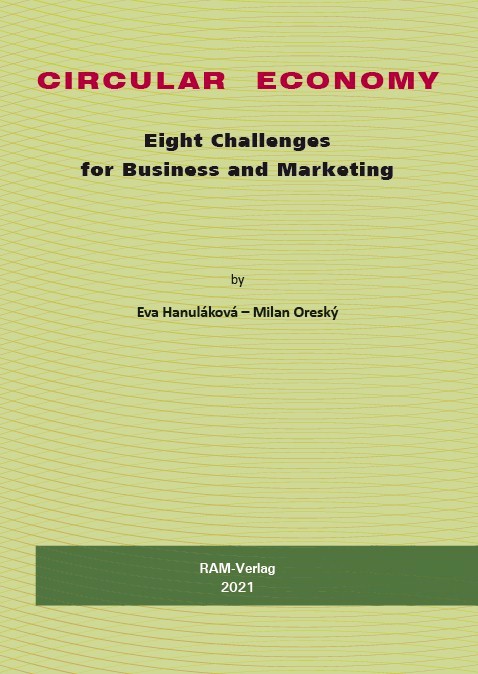|
 |
ABSTRACT
The monograph deals with the current topic of circular economics and its implementation in business processes and strategies. It discusses this topic both on a general level and on the basis of several examples in the conditions of the Slovak Republic.
The aim of the monograph is to clarify the principles of circular economics and relevant contexts. These related aspects are described as challenges for business and marketing in the form of opportunities or potential risks that may be associated with the transition of companies from a linear economy to a circular economy.
The monograph contains 15 pictures and 8 tables. The knowledge base in writing the monograph consisted mainly of foreign literary sources.
Keywords: circular economy, sustainability, circular business model, circular product, producer responsibility.
PREFACE
The aim of a scientific monograph very intensively oriented to the circular economy is not only to provide the results of intensive activities within project No.1/0587/19 “Possibilities and perspectives of marketing during the transition period on the circular economy in Slovakia as a new business model”, financed by the Scientific Grant Agency of the Ministry of Educa-tion, Science, Research and Sport of the Slovak Republic and the Slovak Academy of Scienc-es (SAV).
At first glance, the content of a scientific monograph clearly defines broader ambi-tions. The individual chapters of the book formulate the challenges for business and market-ing. The author, as experienced academics with extensive knowledge and personal practical experience, formulate eight challenges. The individual challenges form separate chapters.
The first challenge is a clear and now indisputable way to turn the linear economy into a circular economy. The second challenge directly affects the level of companies, where trans-formation management must emerge, which can define the company’s goals in the transition to a circular economy.
The third challenge and the third chapter are the need to change the linearity of supply chains to circular and what this means in the supply chain management concept. The fourth challenge not only provides an overview of the results of several types of research by the authors of the text but also motivates others, points out the pitfalls. The re-search was carried out in business sectors within the Slovak economy.
The fifth challenge deals with a scientific view of the driving forces of business in the circular economy. And then follows the sixth challenge, which brings one of the first compre-hensive texts on marketing in the circular economy.
The seventh challenge elaborates business models for the circular economy and empha-sizes the importance and necessity of managerial management of business management through business models.
The final eighth challenge focuses on the textile and clothing industry, which is very problematic in terms of the transformation to a circular economy. Finally, another innovative circular product is listed.
The monograph concludes with a section of conclusions and a very extensive list of references.
Despite the main motif of the monograph, which is the circular economy, it is clear de-spite the individual challenges that the authors focus their academic and professional orienta-tion on areas such as business marketing, applied marketing, business models, supply chain management, consulting in transforming into new business goals.
The authors welcome any discussion to presented topics and comments from readers.
Authors
